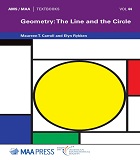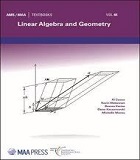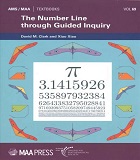
Providence : MAA Press , 2021.
510.76 B689C 2021.
xx, 342 pages : illustrations ; 25 cm.
Mathematics and Statistics

New York : W.W. Norton & Company, 2023.
510.28541 H843E 2023
374 pages : illustrations ; 22cm
Mathematics and Statistics

Providence: MAA Press , 2018.
516.36 C319G 2018
xix, 480 pages : illustrations ; 26 cm.
Mathematics and Statistics

[USA] : AMS Press ; 2015.
516.22 H341G 2015
xvi, 543 pages : illustrations , 26 cm.
Mathematics and Statistics

Cambridge : Cambridge University Press , 2023.
519.54 S274I 2023
volumes : Illustrations ; 23cm
Mathematics and Statistics

Providence : MAA Press , 2021.
512.5 M584L 2021
xiii, 420 pages : illustrations ; 25 cm.
Mathematics and Statistics

Providence : MAA Press , 2019.
512.5 C973L 2019
xv , 557 pages : illustrations ; 29cm.
Mathematics and Statistics

Providence : MAA Press , 2022.
510 S495P 2022
xiii , 334 pages : illustrations ; 25 cm.
Mathematics and Statistics

Providence : MAA Press , 2022.
510.9 B278H 2022
volumes : illustrations ; 25 cm.
Mathematics and Statistics

Providence : MAA Press , 2022.
510.712 C592N 2022
xxi , 124 pages illustrations ; 25 cm.
Mathematics and Statistics

Providence: MAA Press , 2021.
512.02 S564T 2021
xiii , 478 pages : illustrations , 25 cm.
Mathematics and Statistics

